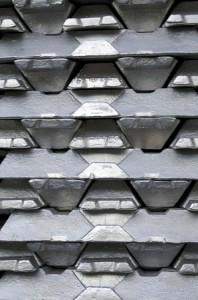 “Lightweighting” is a growing trend that provides precious fuel savings to offset heavier, fuel-wasting weight. In addition to being lightweight, aluminum is resistant to corrosion, can withstand severe weather conditions, is extremely fluid and is an improvement from an environmental standpoint. These trends may not only be shifting the job market in the auto industry, but are also growing outside of the automotive industry.
“Lightweighting” is a growing trend that provides precious fuel savings to offset heavier, fuel-wasting weight. In addition to being lightweight, aluminum is resistant to corrosion, can withstand severe weather conditions, is extremely fluid and is an improvement from an environmental standpoint. These trends may not only be shifting the job market in the auto industry, but are also growing outside of the automotive industry.
A recent entry on autobloggreen discusses both the weight / fuel savings of switching to aluminum, as well as the potential environmental impacts. “Aluminum-sheet construction got topical real quickly earlier this year when Ford said the 2015 F-150 pickup truck would go to a 93-percent aluminum body construction. In addition to aluminum being less corrosive than steel, that change caused the F-150 to shed 700 pounds from its curb weight,” explains blog writer Danny King. And while the aluminum production process takes much more energy than that of steel, the article notes that the fuel efficiency gains are more than enough to offset the environmental impacts from production.
In fact, the benefits of lightweighting are being recognized well beyond the auto industry. In February, EWI announced via a press release on its website that it would partner with University of Michigan and Ohio State University to lead “a new public-private institute geared toward developing advanced lightweight metal manufacturing technology for transition to the industrial sector.” The American Lightweight Materials Manufacturing Innovation Institute (ALMMII) was developed by the United States Department of Defense, and “will focus on the total value chain for lightweight materials – rapid development, qualification, optimized use, and commercialization of affordable lightweight structures for defense and commercial requirements,” according to EWI President and CEO Henry Cialone.
Another article from Crane’s Detroit Business looks at the shifting job market in Southeast Michigan that is directly related to the lightweighting trend. The article notes that the aluminum manufacturing is predicted to bring about 10,000 additional jobs to the region. But there could also be “major shifts in jobs and related processes from engineering and design (safety, durability, efficiency, ergonomics, quality assurance, modeling and simulation) to production (e.g., joining, fastening, casting, stamping, machining, etc.),” according to article author Lisa Katz.
In her article featured on DesignNews, Danielle Walter predicts aluminum demand will reach one billion pounds this year, which is a significant increase from 2012’s demand of 200 million pounds. As demand increases, what service will you use to select your metal materials? Are you already thinking about implementing aluminium in your designs?
Search Prospector’s Metal Materials & Manufacturing Database now…
Check out these sources for more information:
AutoblogGreen
EWI
Crane’s Detroit Business
DesignNews
The views, opinions and technical analyses presented here are those of the author or advertiser, and are not necessarily those of ULProspector.com or UL Solutions. The appearance of this content in the UL Prospector Knowledge Center does not constitute an endorsement by UL Solutions or its affiliates.
All content is subject to copyright and may not be reproduced without prior authorization from UL Solutions or the content author.
The content has been made available for informational and educational purposes only. While the editors of this site may verify the accuracy of its content from time to time, we assume no responsibility for errors made by the author, editorial staff or any other contributor.
UL Solutions does not make any representations or warranties with respect to the accuracy, applicability, fitness or completeness of the content. UL Solutions does not warrant the performance, effectiveness or applicability of sites listed or linked to in any content.



Leave a Reply or Comment